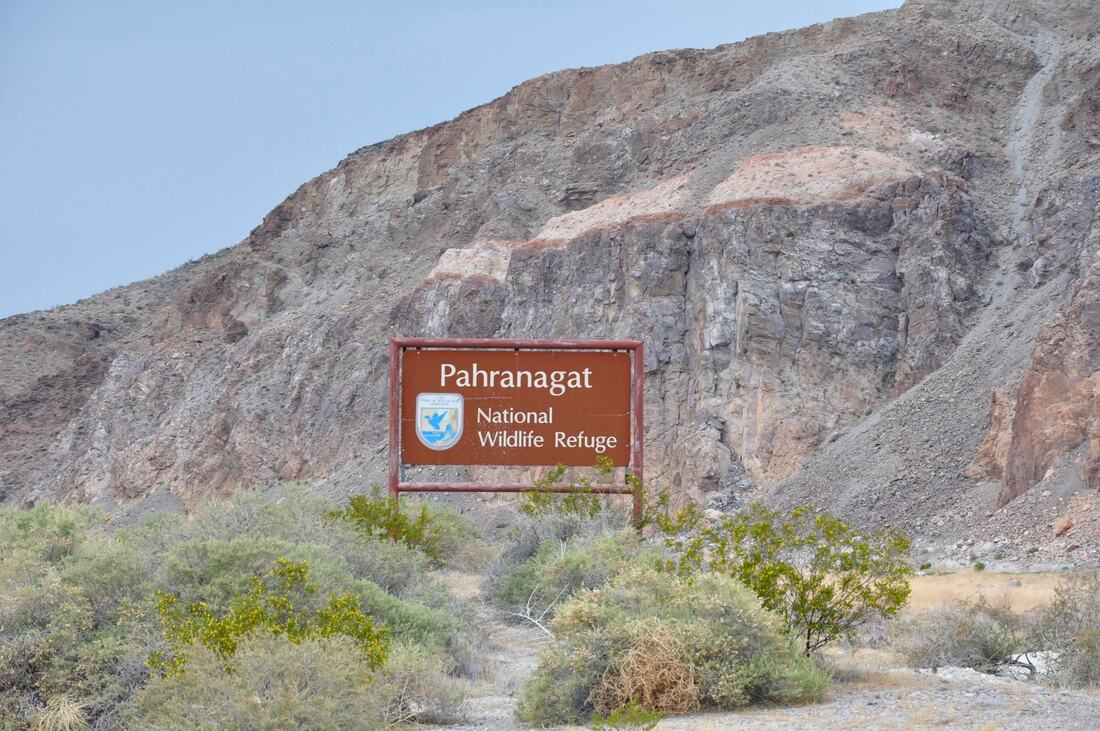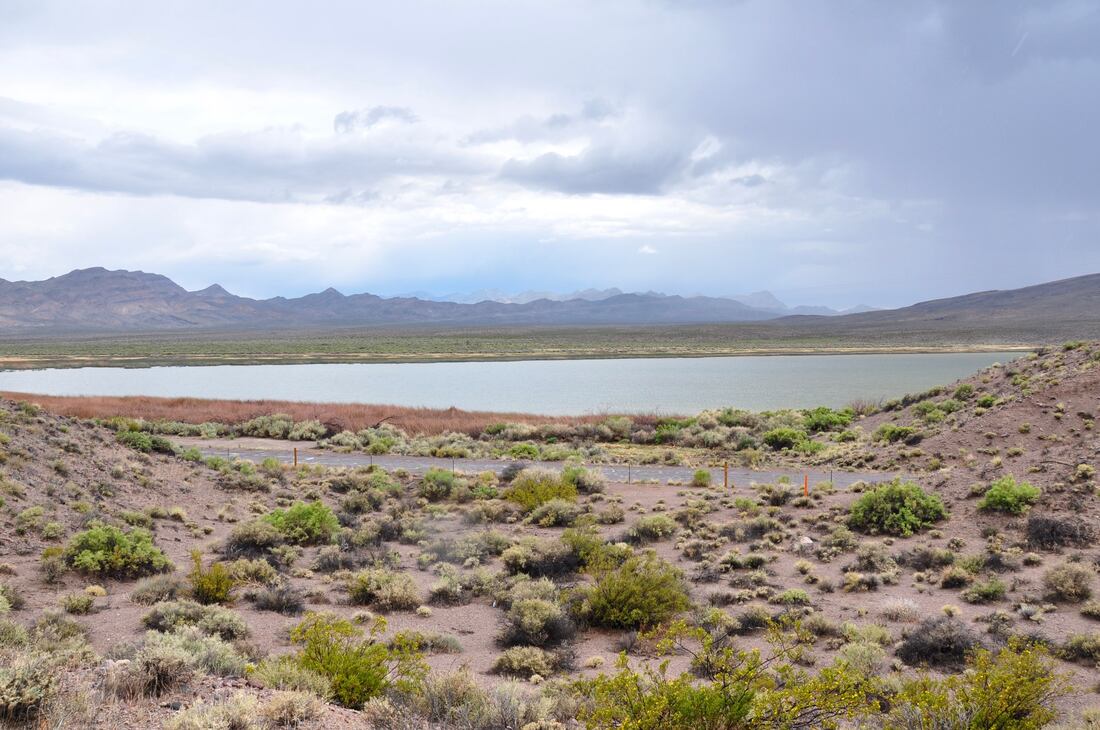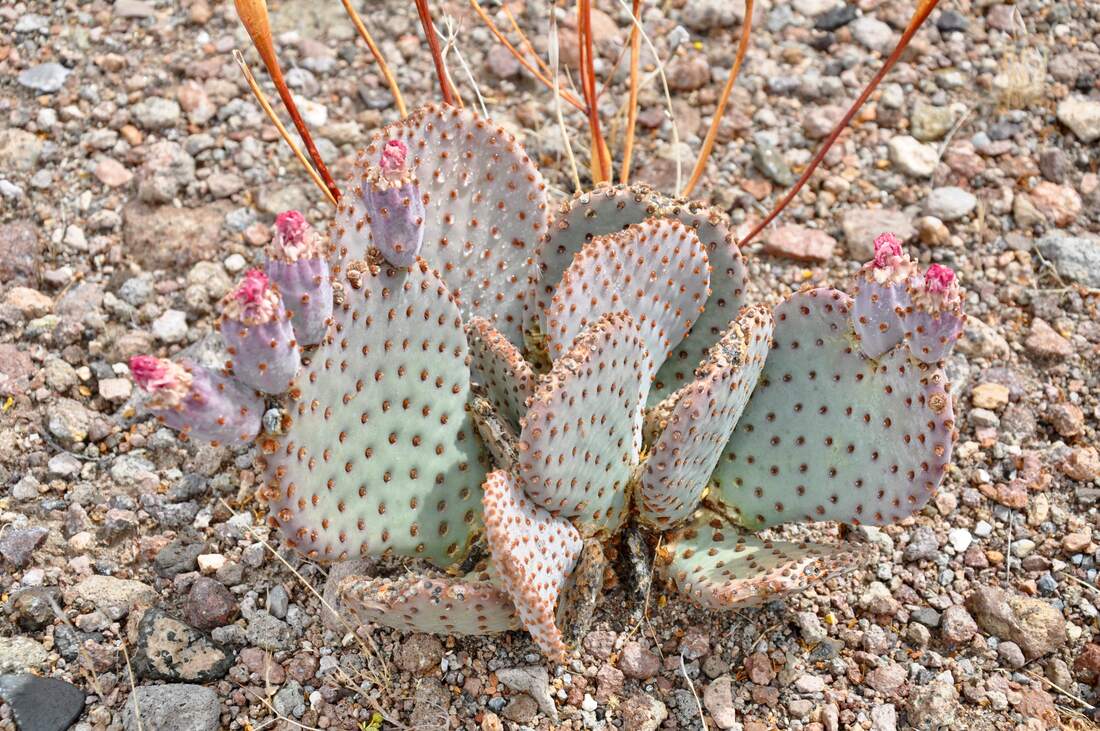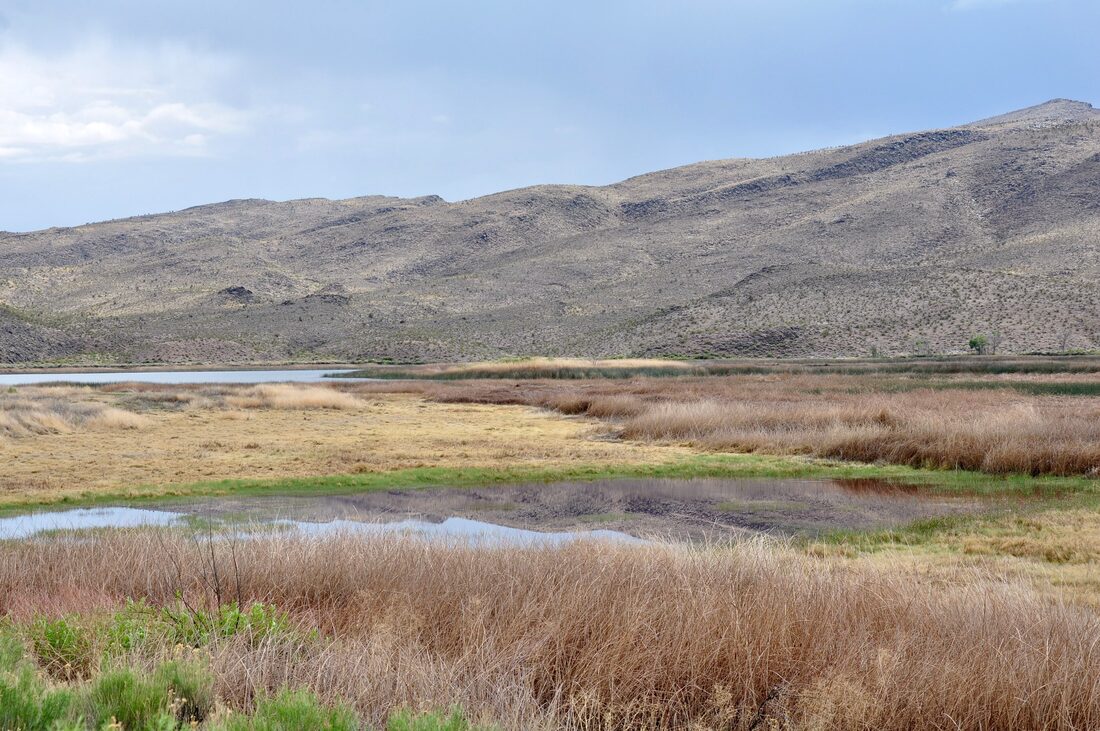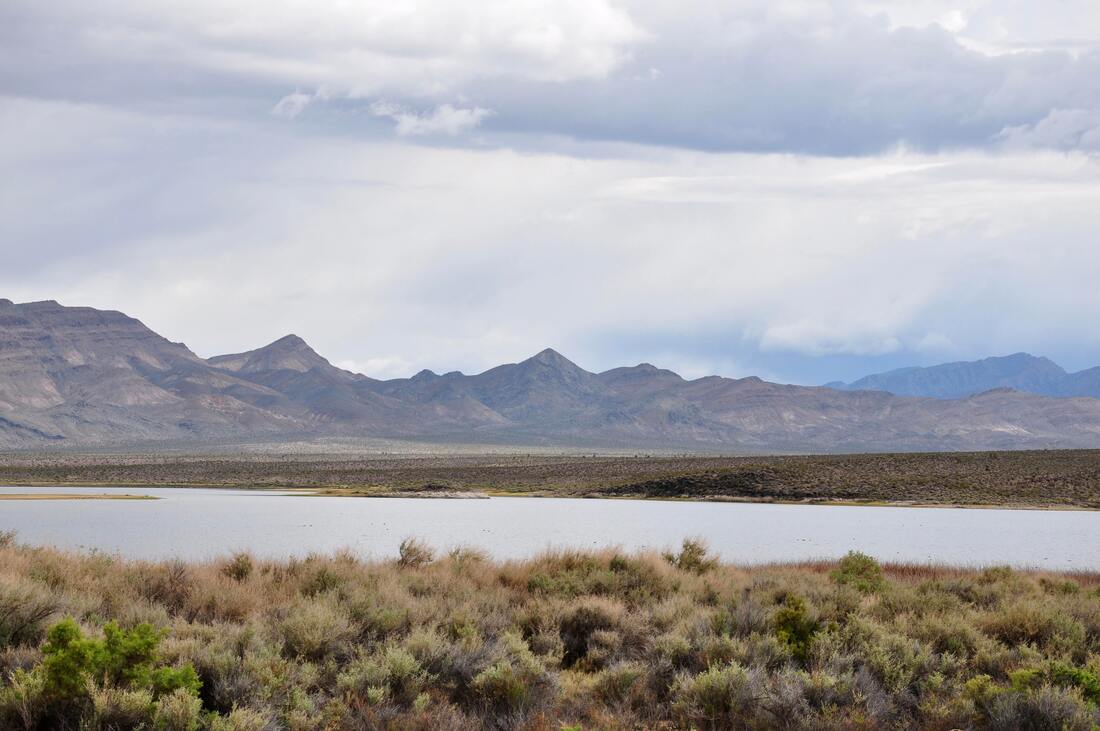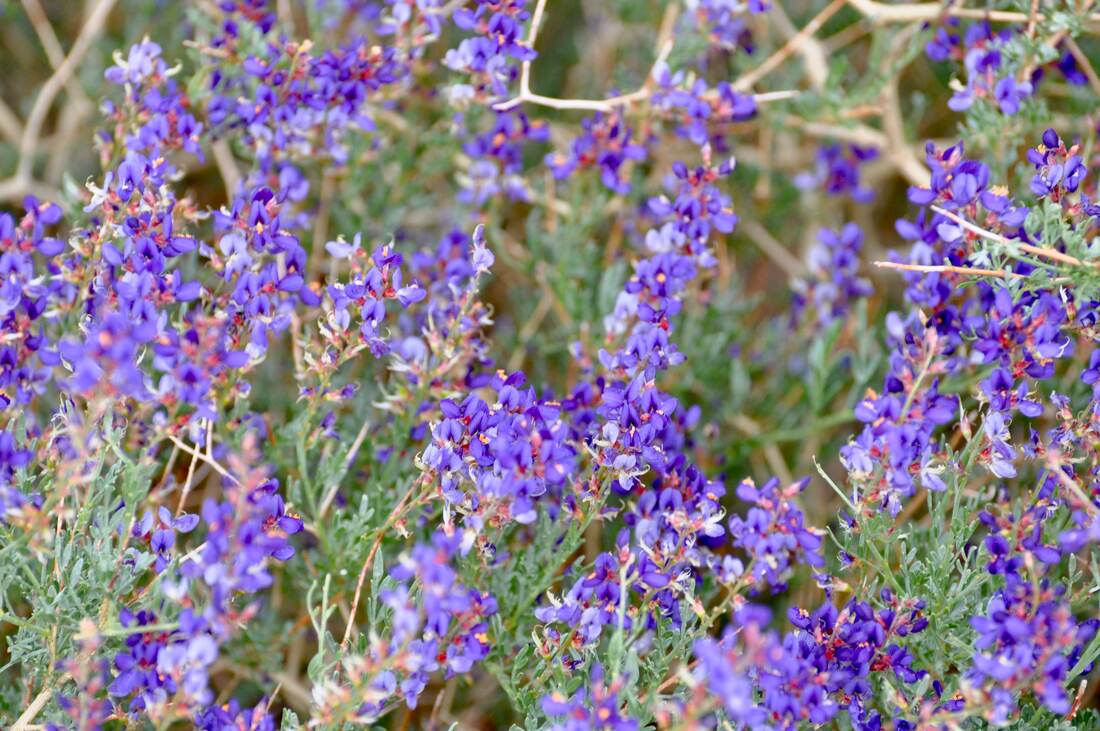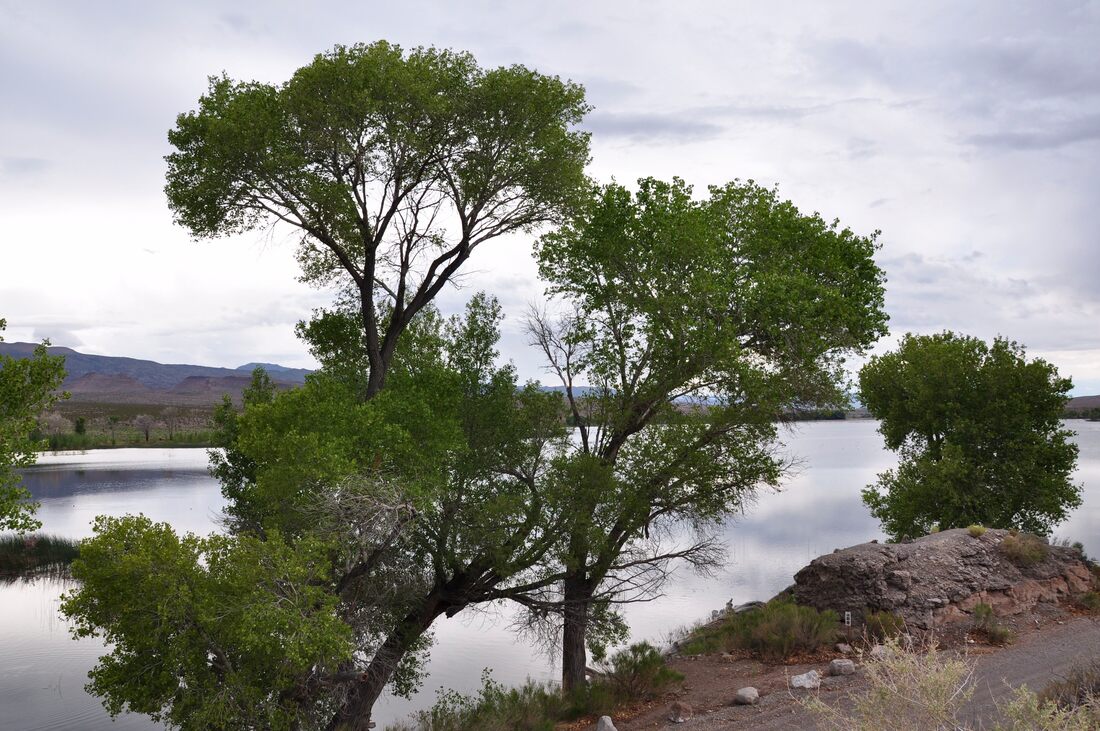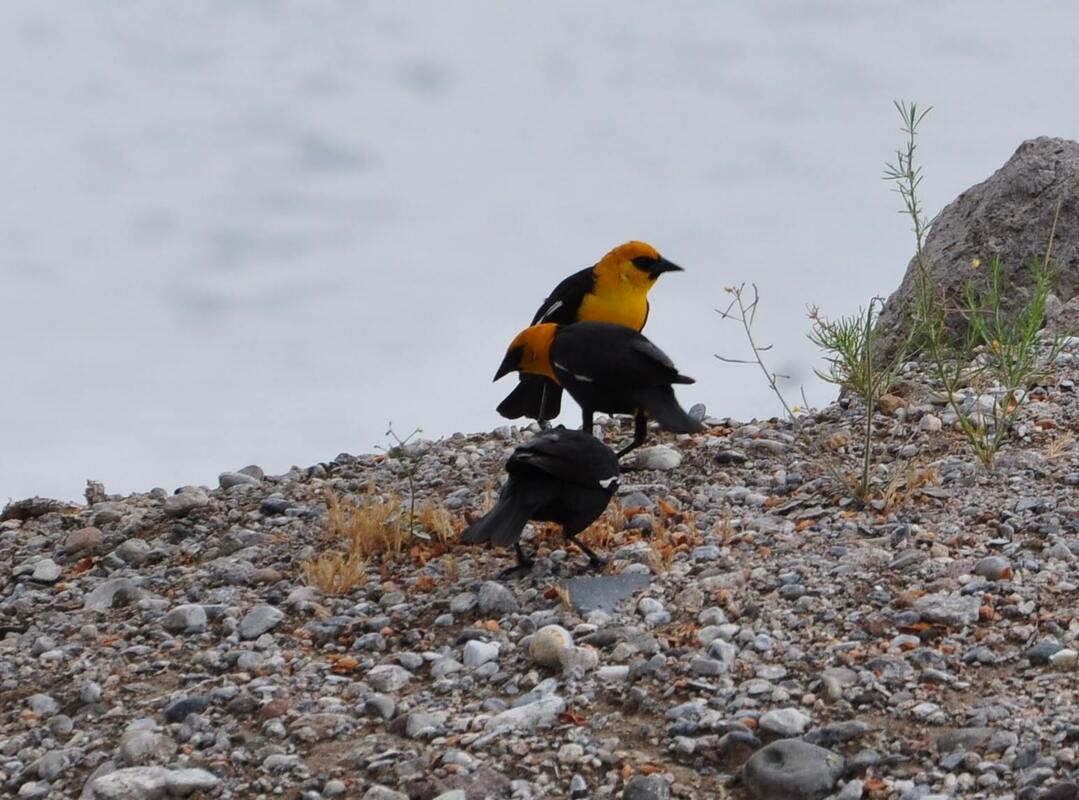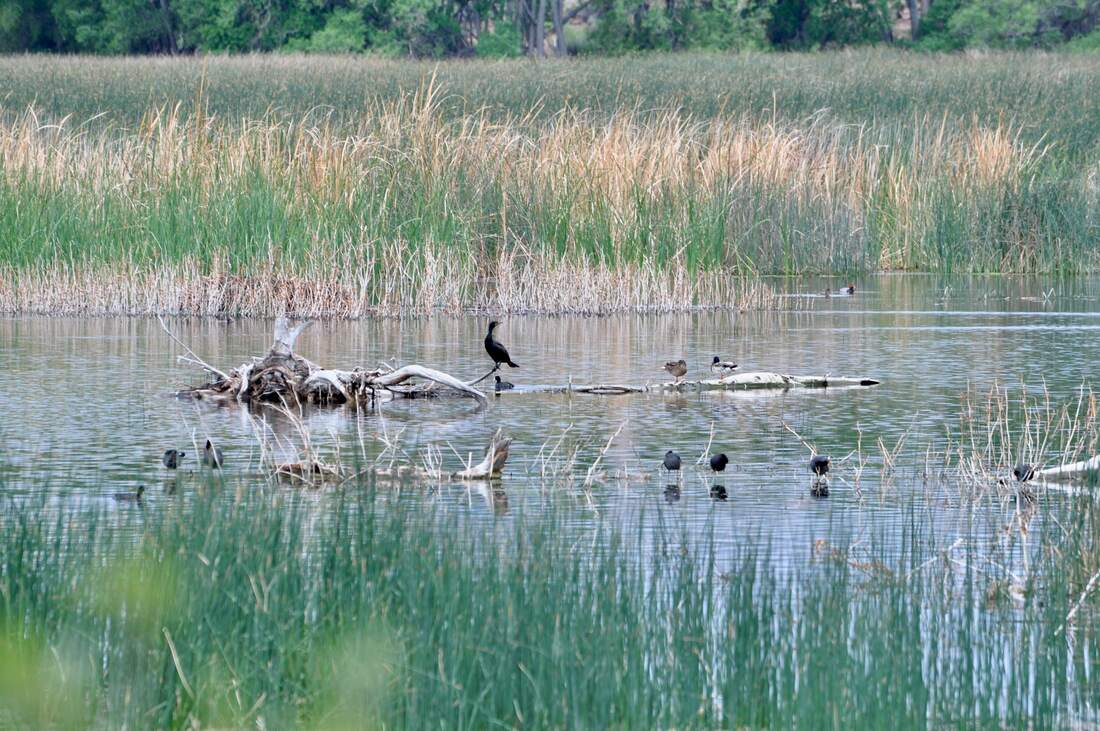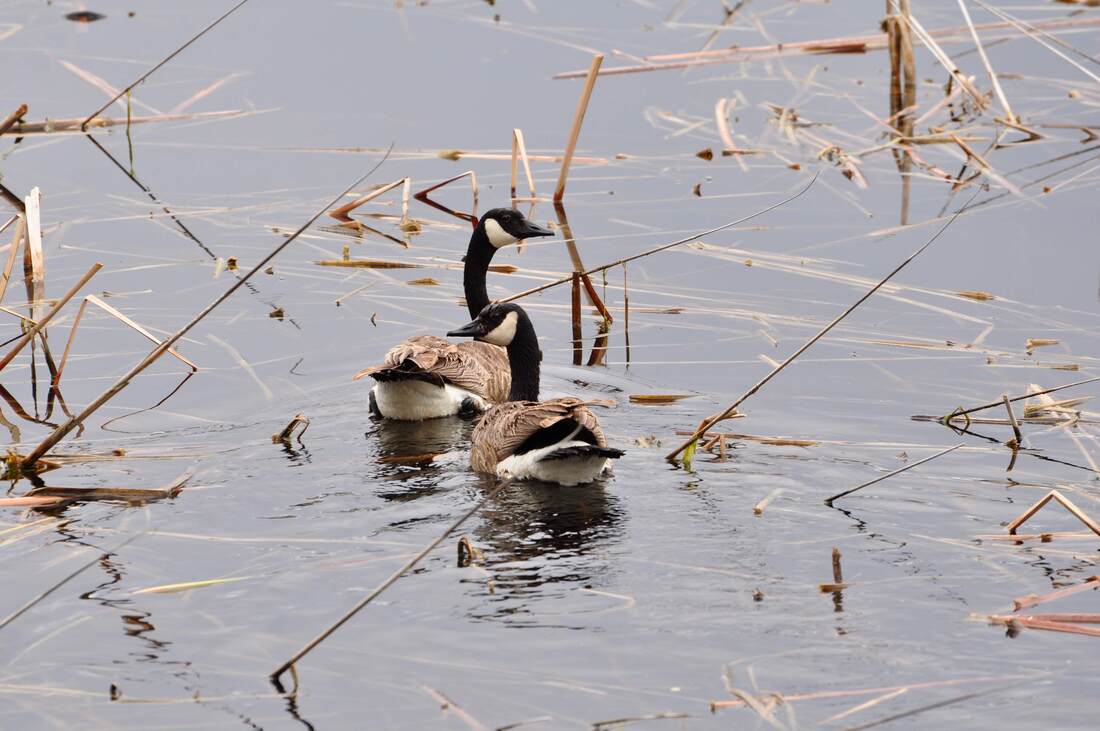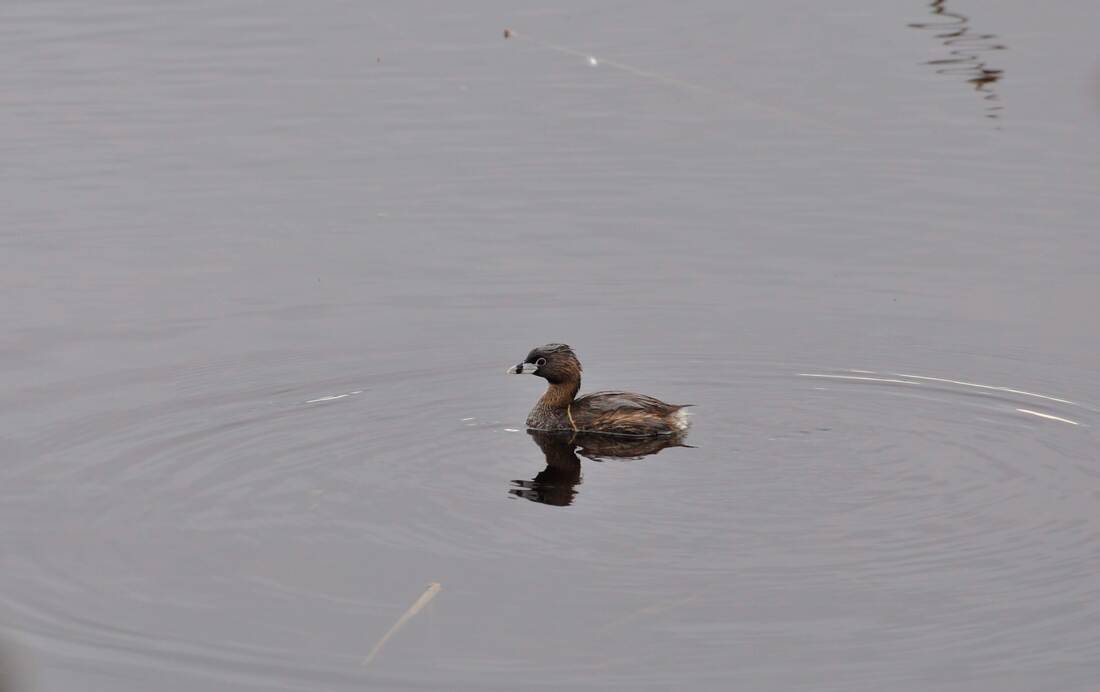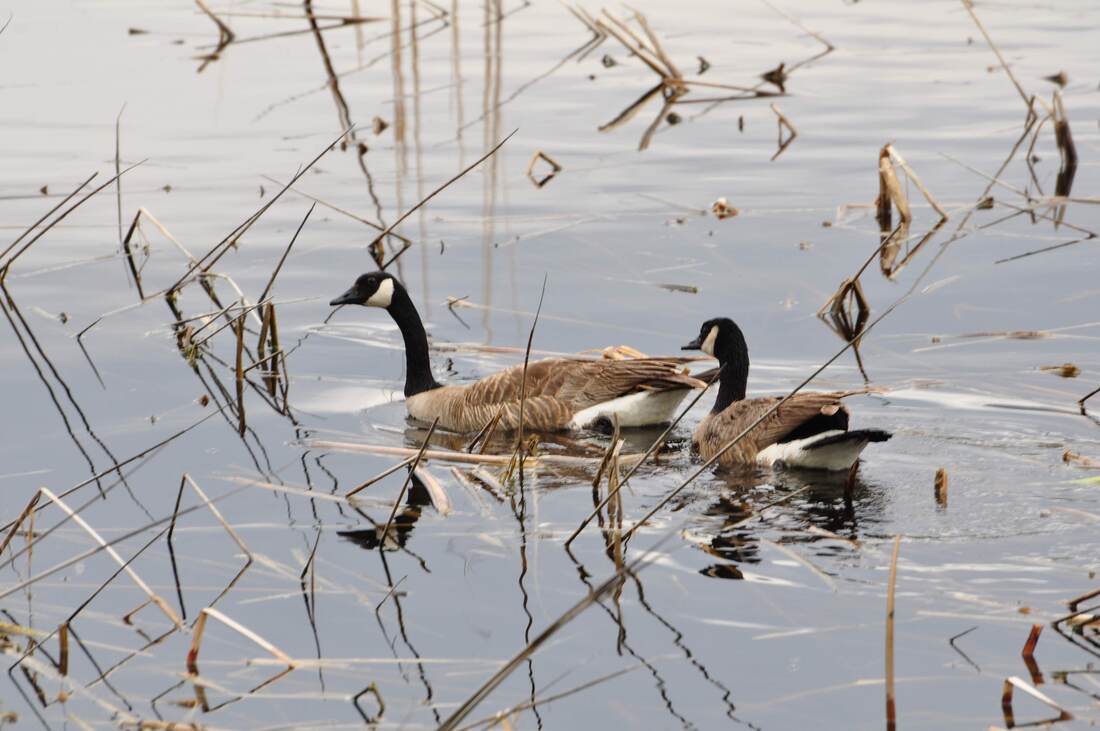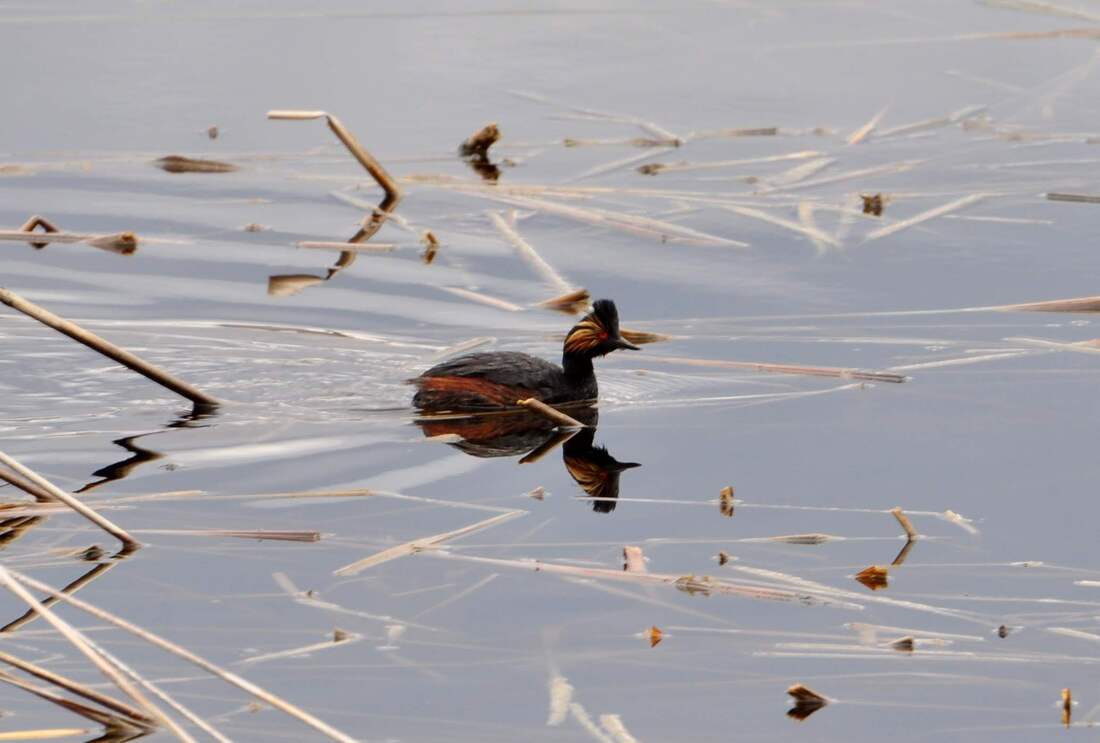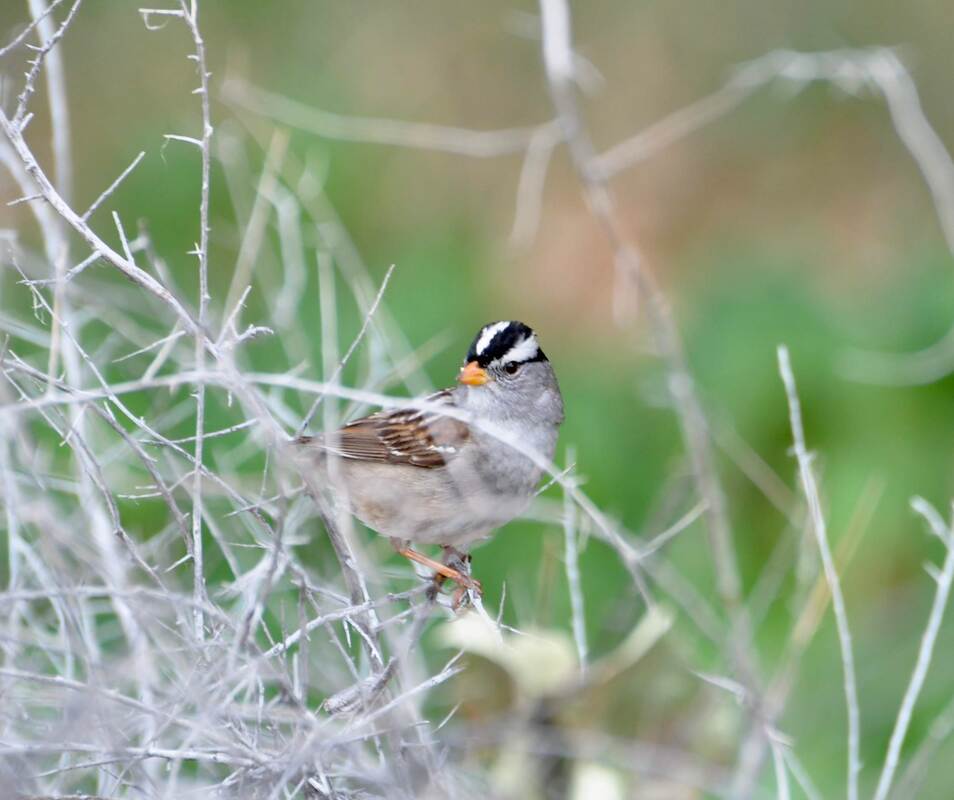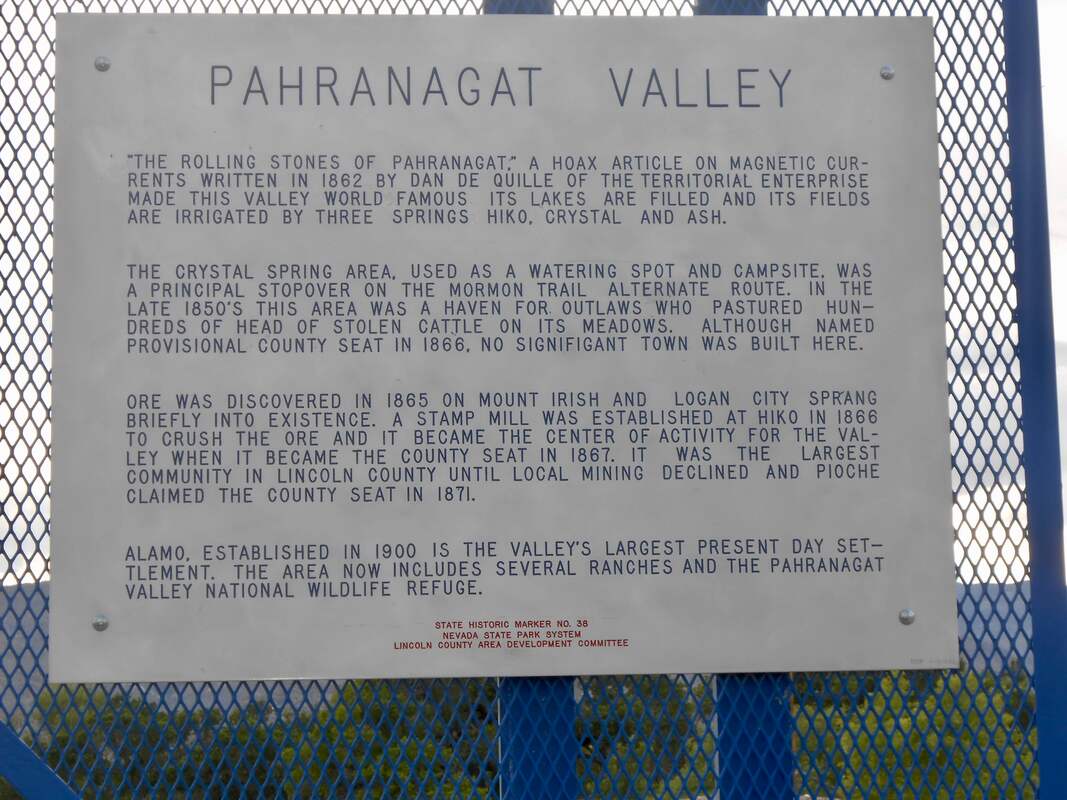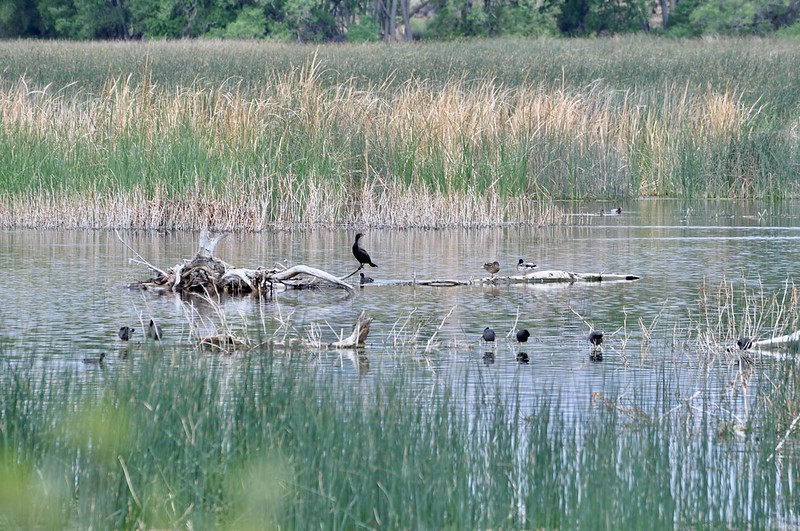|
The word Pahranagat translates to “valley of shining waters” in the local Paiute language. There truly is no better word to describe this green oasis that is located in the desolate Great Basin Desert. The Pahranagat Valley was officially designated as a National Wildlife Refuge, because this unique wetlands area attracts thousands of migrating birds each year and plenty of birdwatchers flock here too! Water flows from three big natural springs into the Pahranagat Valley. Many other small natural seepage springs and the spring season mountain snow melt also help to keep this valley lush and green. A lush green area in the middle of a barren desert does attract wildlife like a magnet, so this is a good place to watch the wild animals at play. The Paiute Nation and other local tribes have occupied or held ceremonies at Pahranagat for thousands of years. This valley is loaded with ancient Native American pictographs and petroglyphs. These forms of ancient rock art communications are interesting to see and photograph. Rangers advise visitors to not touch the rock art, because the oil from fingers does promote the growth of organic matter that can damage the artifact. All ancient petroglyph art is protected by federal law, so it is best to adhere to the rules. The natural springs that feed the valley do maintain the water levels in both the Upper and Lower Pahranagat Lakes. The Lower Pahranagat Lake is the shallower of the two and this body of water usually dries up in the late summer season. A small stretch of savanna and wetland marshes are located between the two main bodies of water and this is where some early morning wildlife can be seen. Just north of the wildlife refuge there are lush green ranches along with a few old west style bed & breakfast resorts. Cottonwood trees provide shade throughout the valley and sitting under a shade tree in a vast sun parched desert is a pleasant thought indeed. During the spring season Pahranagat is a prime time bird watcher’s destination! Migratory birds of every kind pass through this desert oasis between mid February and May. Those who look at western migratory patterns on a map will notice that many of the flight paths converge in the Pahranagat Valley. Water is scarce in the Great Basin Desert, but where there is water, there is life, so it is easy to grasp the importance of this wildlife refuge. Thousands of rare wild birds can be viewed and photographed in this valley, because there are no other reliable water resources for hundreds of miles around. The migrating birds literally have no other choice than to funnel into Pahranagat. Bird watching can also be done on the way to Pahranagat. During my drive from Las Vegas to Pahranagat, a rare desert rain storm took place. In the desert, birds of prey use the calm before a storm as an opportunity to go hunting for small animals that sense the flash flood waters are on the way. In that kind of setting, I saw a Bald Eagle and a huge Red Tail Hawk hunting just south of Pahranagat. The wing span of these raptors can extend over five feet in length, which is impressive to see. Wild migratory birds and local bird species can be spotted all day long at Pahranagat. Western hemisphere wading birds and waterfowl of every kind can be seen in the lakes and reed marshes. Smaller birds that are unique to this region can be seen in the sage brush, but these little birds do scatter off quickly when humans approach. On the day that I visited this wildlife refuge, I photographed American Coot, Gray Vireo, Yellow Headed Blackbird, Cormorant, Canadian Geese, Pied-Bill Grebe, Horned Grebe, Mallard Duck, Gadwell and a few White Crowned Sparrow. This is just a short list of the wild birds that can be spotted in this majestic place! There are well maintained dirt access roads that go to campsites in the Pahranagat National Wildlife Refuge, so doing an extended stay is an option. There are group areas and picnic areas underneath shade trees too. I highly suggest bringing a good telephoto camera or binoculars, because the bird watching experience will be greatly enhanced. A 70 x 300 lens and a Nikon D90 is what I used to capture the wild bird photographs. The stars of the show at Pahranagat definitely are the migrating birds. The scenic mountain peaks and the ancient ocean bottom terrain that surrounds Pahranagat National Wildlife Refuge is breathtaking to see as well. This region literally looks like an ancient dinosaur land of sorts with mountains rising from a dried up ocean bottom. The ancient Alamo Bolide Impact Area is also located near the west side of the lake and this meteor was one of the largest objects to ever strike earth. If viewing an ancient bolide impact site sounds interesting, I highly suggest taking the side trip through Alamo Canyon while visiting Pahranagat. The Pahranagat National Wildlife Refuge is located 90 miles north of Las Vegas on U.S. Highway 93 next to the town of Alamo, Nevada. Recreational vehicles and camper rentals are available in Las Vegas, if luxury style camping is your style. No pets are allowed at this wildlife refuge, so pet owners should keep this in mind. There are campsites with facilities in the park, while gas, food and water are available in the little town of Alamo. Alamo also hosts a few motels and dude ranches too. If you happen to be really adventurous and you have a 4×4 vehicle, there is a second way to get to Pahranagat from Las Vegas. The entrance to the Desert National Wildlife Range is about 10 miles north of Las Vegas on Highway 95. By taking the lengthy Alamo Trail dirt road on the northwest side of this vast wildlife range, you can get to the west side of the Pahranagat Valley without ever seeing a paved road. The Alamo Trail actually ends at the ranger station on the west side of Pahranagat Lake. I do suggest checking with rangers before driving this Jeep trail, because there are times when this dirt road is closed due to flash flood damage. The Alamo Trail dirt road option through the Desert National Wildlife Refuge is perfect for those who really want to see nothing but the great outdoors all day long with no civilized interruptions. Going to the Pahranagat National Wildlife Refuge during the spring season while the birds are migrating is simply a must to do. There are few other places out west that have as many migrating birds passing through one small valley. Pahranagat truly is a birdwatcher’s dream come true and this is all the inspiration that is needed to make the trip happen!
0 Comments
Your comment will be posted after it is approved.
Leave a Reply. |
Leave no trace!
New!
Destination West YouTube channel! https://www.youtube.com/@DestinationWestOrg *The Destination West website upgrading project is well underway. Unique YouTube slideshows are replacing the outdated Flickr photo galleries. The new videos feature modern graphics and alternative music instrumentals that enhance the viewing experience. Some articles are being condensed, while others are getting much needed edits. As everybody knows, the bulk of the original articles and photos were published on the fly during the Covid camping venture and there were limitations. Upgrading is the way to go and more articles will receive a makeover each week until this project is completed. After that, I will be able to gather new material. There is light at the end of the tunnel!
JD Lane Archives
July 2024
Donations help the Destinaton West project continue into the future!
Go Fund Me! This website uses marketing and tracking technologies. Opting out of this will opt you out of all cookies, except for those needed to run the website. Note that some products may not work as well without tracking cookies. Opt Out of Cookies |
